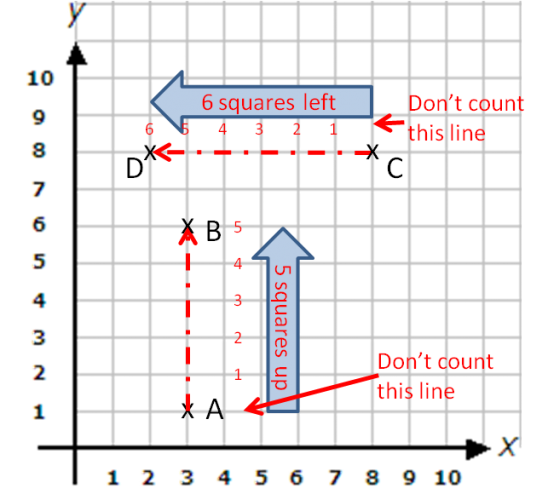In this activity, we will be learning how to describe movements on a coordinate grid.
Points can be shifted on a grid by moving them left or right and/or up or down.
This is called translating a point.
In maths, translate means shift or move.
Look at this diagram, showing points A, B, C and D on a set of x and y-coordinate axes.

A can be translated to B by shifting it 5 squares up.
We sometimes do two movements when we do a translation:
A can be translated to C by shifting it 5 squares to the right and 7 up.
When describing two movements, we could put them in any order, but it is best to get into the habit of doing the horizontal movements first since this would be the x-coordinate on a grid, which always comes before y.
So, it is better to say 'move 5 squares to the right and 7 up' than '7 squares up and 5 squares right', even though either instruction would take you to the same position!
Let's try a question together.
Example
How can C be translated to D?
Answer
If we look carefully at the grid, we can see that C could be moved to D by shifting it 6 squares to the left.
Now it's time to try some questions like this yourself.

Are you ready to have a go?

